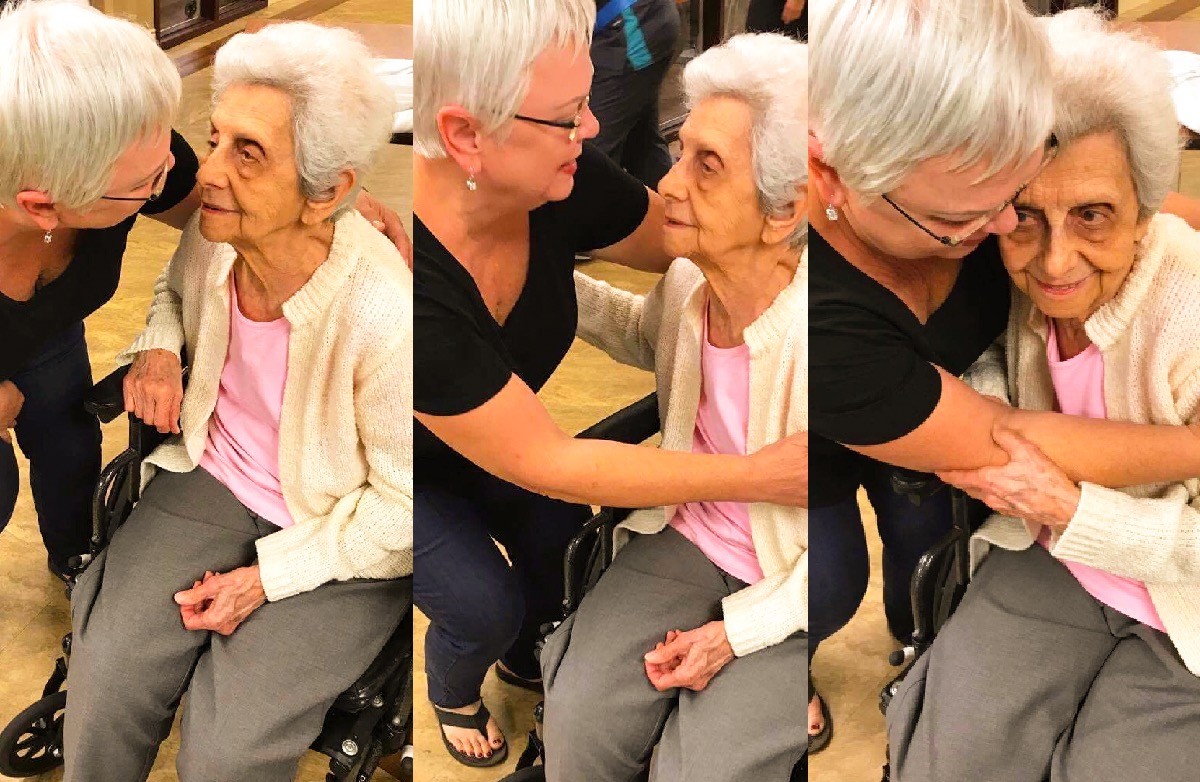Jean Erwin Forster has been through a lot. A skilled nurse, she has survived acute myeloid leukemia and pseudomyxoma peritoni appendix cancer. She has also cared for her elder parents for the last 19 months, five of them in the home she shares with her husband, Kent. Her parents’ care rotated from their nearby home, to her home, to the hospital, to rehab centers and back home again, the cycle many people know all too well.
Her father, Robin Winfred Erwin, died a month ago, at 88, surrounded by family members. Forster was by his side, her ear tuned to the last whisper of breath and her hand over his heart to feel the last beat. Also 88, her mother, Budehia Erwin, is going through her own ravages of aging; seizures, loss of equilibrium, dementia. Budehia and Robin were married for 66 years and devoted to each other for 68.
Forster has coped with all of these ordeals partly by directly and eloquently writing about her daily trials and small joys to a loyal and caring Facebook group of family and friends. “I could dump a truckload of grief on here every day,” she wrote last Friday, “but I try to hold back. It’s more than I expected, the tears roll at the most awkward times and places, and sometimes I walk around in a daze wondering how others don’t see and feel what I do.”
Foster’s mother is currently in an Oak Ridge rehab facility, recovering from her latest situation that ended in hospitalization. Last Tuesday Forster wrote, “Today I discovered a terrible thing about myself, or rather an attitude. You see, for the three different times Daddy was in rehab for a month duration each, I visited him almost daily (except when the appendix cancer was still wrangling with me). On each of those visits, no matter what time of day, there was always a cluster of dementia patients in wheelchairs near the main nurses’ station.”
“This was so these confused individuals could be watched more carefully and any unsafe movements on their part could be interrupted,” Forster continued. “It is not uncommon to see one of them with a doll, another with a blanket wadded up under a chin dripping with drool, another waiting to have her needs taken care of. As visitors walk by, they don’t know whether to acknowledge each of these patients, or even just one of them, or pretend they don’t exist. Eyes are averted, steps get hurried. I have done the same,” she confessed.
“But today, when I walked in to be with Mother, SHE was one of those patients. She looked as confused as any of the others – honestly more so. And in an instant, my heart wrenched as I realized others are observing my darling mom, and seeing her in the same light I had viewed all the previous patients … Abject shame washed over me. How dare I, and anyone else, ever see these souls as pitiful?”
Some days, Mrs. Erwin knew her daughter and was happy to see her. Others not so much. There were glimmers of recognition that her daughter was someone she knew, but she wasn’t sure just who. It’s how the confusions of dementia and its more aggressive version, Alzheimer’s disease, eat away at patients’ memories.
None of how visitors react to dementia patients, or what the illnesses do to patients themselves, is new. Centuries before the invention of photography brought us face to face with these catastrophic conditions, and the written word described them in increasing clinical detail as the science of medicine developed, art, especially painting, captured the mentally ill.
One of the functions of art has always been to reflect and comment on real life. The mid-15th century painting, St. Bartholomew Exorcising, (a Google search finds it), depicts Bartholomew, one of 12 apostles of Jesus, casting devils out of two mentally ill men in the streets of Jerusalem, set, in the painting, as an early Renaissance street scene. Art often depicts historic moments as contemporary to the time the painting was made.
Historic art’s portrayals of the mentally ill as demon-possessed was the common view of the day. Even sadder, in the age when Google can find just about anything you want to know, this perception hasn’t gone away. The director of nursing at the rehab facility, which chose to not be identified in this story, confirmed it. At least in part, it underlies why visitors shy away, step widely around, pass as quickly as possible, look away.
It’s what Jean Forster detected in herself that shocked her so much. It’s what she saw in other visitors.

